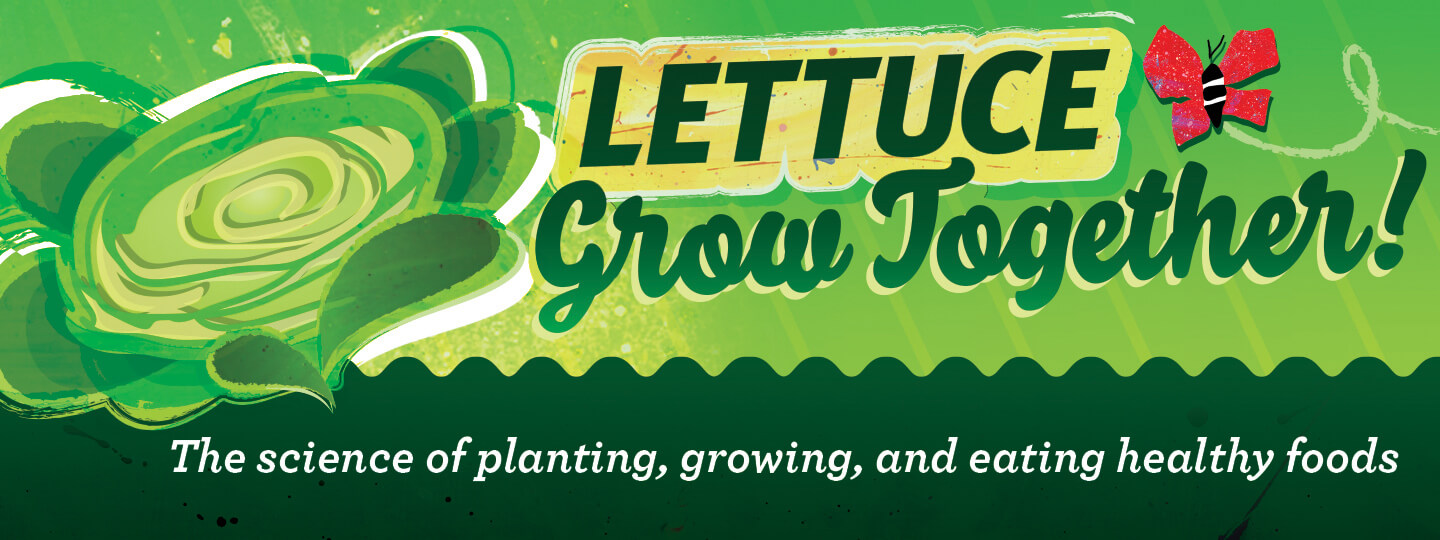
January’s theme: Make it Last!
January’s theme: Make it Last!
January’s theme: Make it Last!
Since many outdoor gardens are in hibernation during the winter, we are exploring the science of preserves and pickling and why our food spoils.
READ: Check out our Facebook Live ![]() storytime reading of “Up in the Garden, Down in the Dirt” by Kate Messner, illustrated by Christopher Silas Neal and published by Chronicle Books.
storytime reading of “Up in the Garden, Down in the Dirt” by Kate Messner, illustrated by Christopher Silas Neal and published by Chronicle Books.
WATCH: Learn how to make a pickled sweet corn relish with this video on the science of pickling and making your own pickled veggies at home!
DO: Discover why food spoils with this at-home science experiment!
Why Does Food Spoil?
Materials
- One apple
- Five containers (small jars or drinking glasses will work)
- 1 cup salt water (1 tablespoon of salt dissolved in water)
- 1 cup vinegar
- 1 cup lemon juice
Steps
- Gather your materials and have a grown-up cut the apple into five slices.
- Put one slice of apple into each container.
- Place one container in the fridge. Place the second container in a cool place where it can stay for about one week.
- Pour the salt water over the third apple slice, the vinegar over the fourth apple slice, and the lemon juice over the fifth apple slice. Place the three containers in a cool place where they can stay for about one week.
- Observe! Check on your apple slices each day. What do you see? You can make notes or draw pictures showing any changes. Talk with your grown-up about what you think is happening.
- Learn! Food “goes bad” because of the growth of bacteria and fungi. Have you ever seen fuzzy blue or green stuff on something in the fridge? Mold is a type of tiny fungi. As the bacteria and fungi break down the cells of a food, they cause it to decay or “rot.” Some kinds of bacteria are bad for us and can make us sick if we eat them. Bacteria and fungi are living things. We can preserve our food by taking away things bacteria need to live, like heat, water, and air. We can also change the chemistry around the food, to make it harder for bacteria to grow.
- What did you notice in this experiment? Which apple slices look the best? The apple in the fridge probably lasted longer than the apple that was just in the open air, because the cold of the fridge helped keep mold from g rowing. Vinegar and lemon juice contain acid, and bacteria don’t want to swim in acid. Salty water also keeps bacteria from growing. While you don’t want to eat any of the slices from this experiment, you can talk with your grown up about the best ways to keep our food safe to eat!
SAFETY: Make sure not to eat your spoiled food experiments!



